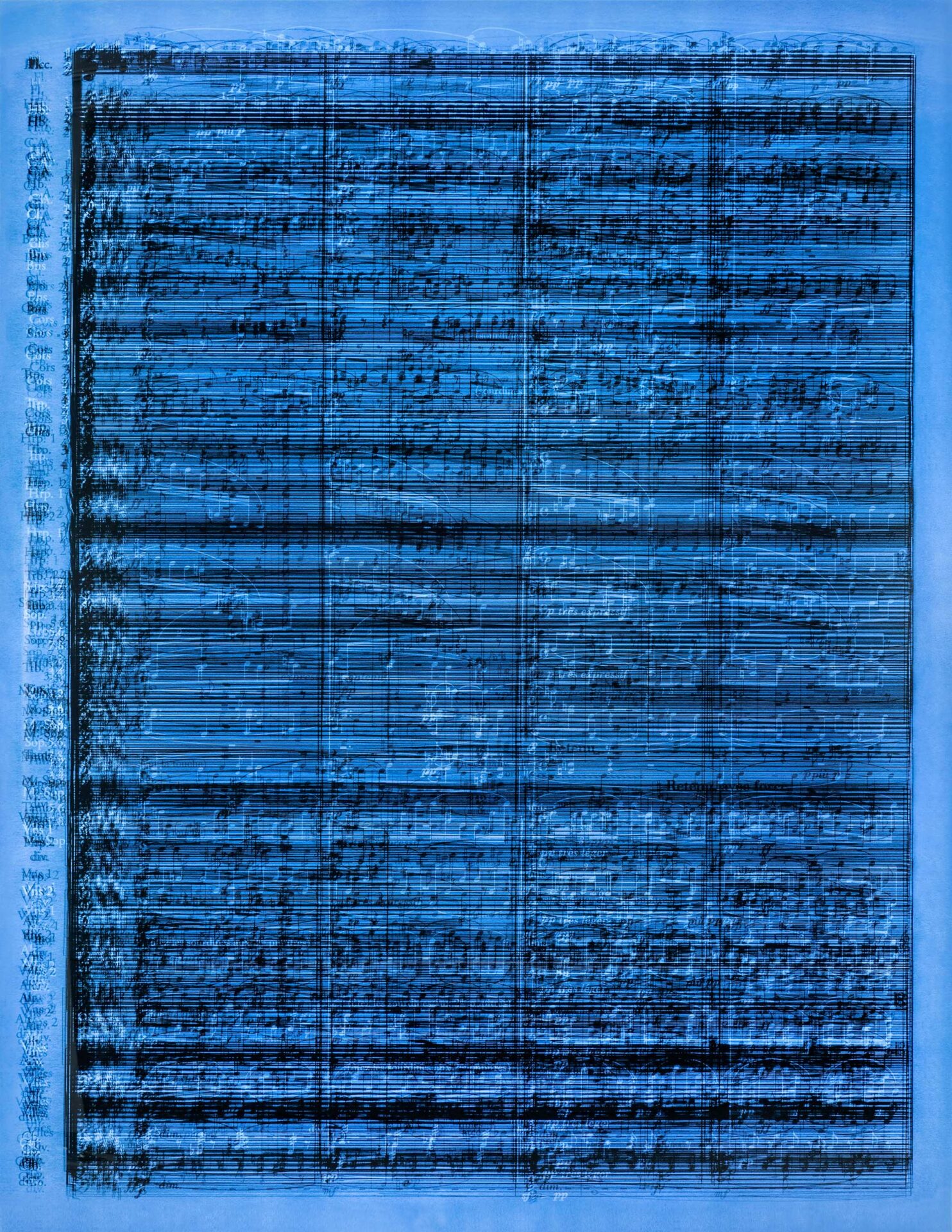Idris Khan, an artist who works in a wide variety of media, was born in Birmingham but grew up in Walsall, a West Midlands market town. He initially studied photography in Derby, and although his career has diverged into different forms of expression, his interest in time has not diminished and the camera is the medium he uses to capture the moment. He graduated with an MA from the Royal College of Art.
Khan draws on his interest in philosophy, music, art, poetry, religion, culture, architecture and literature and incorporates them in some way into his work. One of the first pieces with which he captured the interest of critics was every… page of the Holy Qur’an (2004), in which he used the Quran as working material. Khan photographed the pages of the sacred book one by one and superimposed the images as transparencies. It took him two months to complete the work. The result is an unreadable pattern, a gentle wearing away of lines, geometric and abstract. The book is there for us to see, but we cannot read it. It is a work that speaks of the ambivalence he feels towards his religion of birth. Through this work, he is seeking to reconnect in some way with his cultural origins.
In 2010, Khan suffered two important losses: his mother died, and soon afterwards, his wife, the sculptor Annie Morris, had a stillbirth. Khan tried to assimilate the grief by throwing himself into art to manage his emotions. He began to write down his feelings and with this text he made a stamp which he imprinted over and over again in a circle. This repetitive, cyclical pattern proved cathartic and therapeutic for Khan, like a chant. It marked the beginning of his stamped glass works, in which he superimposes glass sheets to give the drawing another dimension of depth. Like a burst of colour, the occasional phrase is visible, like a mandala, radiating from a point of origin.
This stratification process that he began with the Quran reappears in his work, but with musical scores, another of his passions. In this case, he applies the same technique of superimposing images, so that we glimpse the musical notes but cannot read them in full. A good example of this series is the work in the Hortensia Herrero collection entitled Lost Happiness, a piece that may seem abstract at first, but as we get closer we discover those scores superimposed on each other. This work already reflects an influence of American Abstract Expressionism, more evident in later works, where a clear homage to Mark Rothko can be seen.
